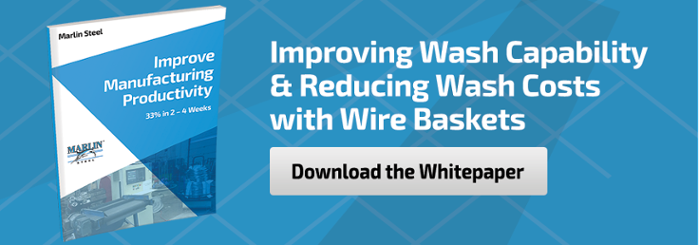 If you’re an avid follower of American manufacturing or energy industry news, you may have heard about the recent Supreme Court decision to stay the implementation of the Clean Power Plan (CPP).
If you’re an avid follower of American manufacturing or energy industry news, you may have heard about the recent Supreme Court decision to stay the implementation of the Clean Power Plan (CPP).
This decision has both supporters and detractors of the CPP nervous. Environmental groups are worried that this might mean the total dissolution/annulment of the plan. Meanwhile, manufacturers and members of the energy industry are left wondering if the plan is going to move forward or not.
Why should American manufacturers be worried about the Clean Power Plan?
Here are a few reasons:
1: Financial and Regulatory Uncertainty
One of the big issues with the stay of the implementation of the plan is that it creates a tremendous amount of uncertainty for manufacturers. Without some idea of what the rules for compliance will be in the future, manufacturing companies cannot make sound investments, grow their businesses, or add jobs to the economy.
Manufacturers already face a massive regulatory burden as it is. According to data from the National Association of Manufacturers, “complying with federal regulations costs Americans $2.028 trillion in lost economic growth annually, or roughly equivalent to 12 percent of total GDP.”
Smaller manufacturers are harder-hit by the regulatory burden than the average business, “more than three times as much as the average U.S. firm.” Which is about “$34,671 per employee per year” according to the article. These costs can strangle growth for smaller manufacturers.
If passed, the CPP will further increase energy costs for manufacturers in Maryland alone by about 9 percent, according to data from NERA Economic Consulting.
Even with the stay of the CPP, some states may continue to forge ahead with their compliance plans just in case the measure passes back into law. The costs associated with meeting compliance standards for a defunct rule could harm the industrial sector over time.
2: Restrictions On Choice for Energy
While the language of the Clean Power Plan currently targets coal power, this plan opens the door for future restrictions on other forms of energy. There are already federal regulations pending that target both oil and natural gas. Currently, about 75% of the energy we consume in Maryland comes from energy sources being targeted by the EPA.
Right now, a lot of the long-term projections on energy cost savings for lower-emissions energy sources rely on the adoption of natural gas. The issue with this is that the current low cost of natural gas is owed to a boom in the fracking industry providing plentiful, cheap natural gas.
The abundance of natural gas has allowed power plants to switch over to natural gas without increasing energy costs compared to coal. However, since policymakers are starting to target natural gas with more restrictions, costs will go up, which will affect the cost of manufacturing.
By removing coal as a cost-effective fallback energy source, the CPP may end up negatively affecting jobs and growth for the manufacturing industry in the future.
3: It Could Establish Dangerous Precedents for Direct Regulation of the Industrial Sector
As was mentioned earlier, the manufacturing sector already faces a disproportionate regulatory burden compared to other U.S. industries. The Clean Power Plan could create a dangerous precedent for granting the EPA even more power to directly control the energy and manufacturing sectors through regulation.
As noted in the opening statements of the Subcommittee on Energy and Power’s Chairman, Ed Whitfield, “there is a threshold question about whether EPA has statutory authority to proceed with its Clean Power Plan at all… Even assuming authority exists; neither the language of this provision nor its decades-long implementation history suggests that it authorizes such a sweeping federal agenda.”
If this measure passes, the EPA would suddenly find itself with vastly increased authority to implement regulations, which could be dangerous for manufacturers if left unchecked.
We need for lawmakers to restore some balance to the regulatory process so that American manufacturers can remain competitive in the global economy.
Final Thoughts
The goal of the Clean Power Plan to reduce the production of toxic emissions and greenhouse gases is a worthwhile one. In fact, the manufacturing industry is already taking steps to reduce emissions.
According to EPA data, the industrial sector has reduced greenhouse gas emissions from “2,262.9 MMT CO2 Eq. in 1990” to “2,005.7 MMT CO2 Eq. in 2014,” a reduction of more than 10%. Meanwhile, carbon emissions have been reduced by 13 percent since 2005, even as manufacturing’s contribution to the American economy grew by roughly 26%.
Environmental regulation is important to helping guide different sectors of the economy towards better, more sustainable practices. However, such regulations have to be carefully considered for not just their environmental impact if successful, but on the impact they can have on the ability of our nation’s very infrastructure to continue functioning.
Changes should be made slowly, carefully, and with full consideration of all the consequences to everyone. Broad, sweeping changes for the sake of one party’s interests can put everyone’s rights and wellbeing at risk.
Learn more about the Clean Power Plan on Voice of America, where they have a feature talking about the Supreme Court decision to stay enforcement of the CPP.



.gif)


